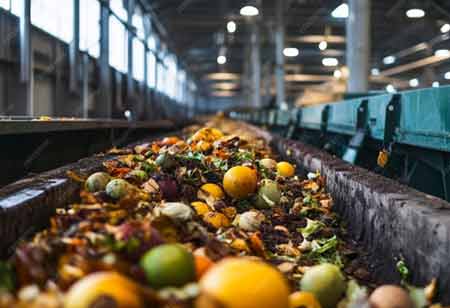THANK YOU FOR SUBSCRIBING
Be first to read the latest tech news, Industry Leader's Insights, and CIO interviews of medium and large enterprises exclusively from Food and Beverage Tech Review
Food Processing: Prospects for Growth in 2023
Are you inquisitive about the future of food manufacturing and processing?

By
Food and Beverages Tech Review | Tuesday, April 18, 2023
Stay ahead of the industry with exclusive feature stories on the top companies, expert insights and the latest news delivered straight to your inbox. Subscribe today.
Companies that can adapt to shifting consumer trends and preferences have significant opportunities in this industry.
FREMONT, CA: Are you inquisitive about the future of food manufacturing and processing? A comprehensive assessment of opportunities, threats, and learnings that will shape the business
in the upcoming year is essential.
Exciting developments, including new technologies and changing consumer preferences, are on the horizon. You will want to take advantage of these insights as we discuss the leading trends in food processing and manufacturing for 2023.
The food processing and manufacturing industry in the United States is a $1.1 trillion sector that employs over 1.8 million people in over 23,000 businesses. The industry grew at a compound annual rate of 3.6 percent between 2007 and 2017 over the past decade.
Despite this growth, the industry confronts numerous obstacles, such as an aging workforce, rising labor costs, increased regulation, and shifting consumer preferences.
Manufacturers need to adopt innovative technologies and procedures that increase efficiency and decrease costs to remain competitive in the face of these threats. Here are some significant trends to keep an eye on in the food processing and manufacturing sector:
Automation: Automation is used increasingly to perform dangerous or repetitive duties. This not only decreases labor costs but also enhances quality control and safety.
Innovative packaging materials and processes: The food packaging industry innovates due to consumer demand for sustainable, convenient packaging. Manufacturers are developing new packaging materials comprised of recycled or biodegradable materials and new packaging techniques, such as vacuum sealing and modified atmosphere packaging. (MAP).
Clean label ingredients: Consumers are becoming more aware of the foods and beverages they consume and are demanding "clean" resources.
The rising cost of basic materials is the primary difficulty. Since 2015, the price of maize has increased by more than 50 percent. This rise is the result of many factors, including droughts and tariffs.
The second difficulty is a labor shortage. Numerous food processors need help to locate sufficient labor, particularly in regions with high unemployment rates.
Increased competition from foreign manufacturers is the third obstacle. Many foreign companies have entered the U.S. market recently, attracted by the country's large population and expanding economy.
Despite these obstacles, the food processing and manufacturing industry offers numerous expansion opportunities. For instance, the industry is anticipated to profit from the ongoing trend toward healthy dining.
Consumers are increasingly interested in purchasing low-sugar, low-fat, and low-calorie consumables. This trend allows food processors and manufacturers to develop healthier products to satisfy consumer demand. Moreover, the industry is anticipated to profit from the sustained expansion of e-commerce sales. Statista predicts that online food sales will increase at a compound annual growth rate of 16 percent from 2018 to 2023.
The food processing and manufacturing industries constantly change, presenting new growth challenges and opportunities. As 2023 progresses, many vital trends will significantly impact the industry.
Increasing demand for plant-based proteins: As consumers become more health- and environmentally conscious, there is an increase in the demand for proteins derived from plants. This allows food manufacturers to develop new products to satisfy this demand.
Technological progress: New technologies are continuously being developed to enhance food safety and quality and boost production efficiency. For instance, blockchain technology can monitor food items from the farm to the table along the supply chain. Manufacturers seeking to remain ahead of the curve face challenges and opportunities posed by these technological advancements.
Altering demography: Along with the aging of the population, there are changes in eating practices. Older adults are generally more health-conscious and have distinct dietary requirements compared to younger adults. This presents a chance for manufacturers to create products that meet these demands.
Economic shifts: The global economy is constantly in flux, which can affect the culinary industry. Tariffs on imported products, for instance, can make it difficult for manufacturers to obtain reasonably priced ingredients. Alternatively, economic growth in certain regions may establish new food product markets.
I agree We use cookies on this website to enhance your user experience. By clicking any link on this page you are giving your consent for us to set cookies. More info


However, if you would like to share the information in this article, you may use the link below:
https://www.fbtechreviewapac.com/news/food-processing-prospects-for-growth-in-2023-nwid-1570.html





